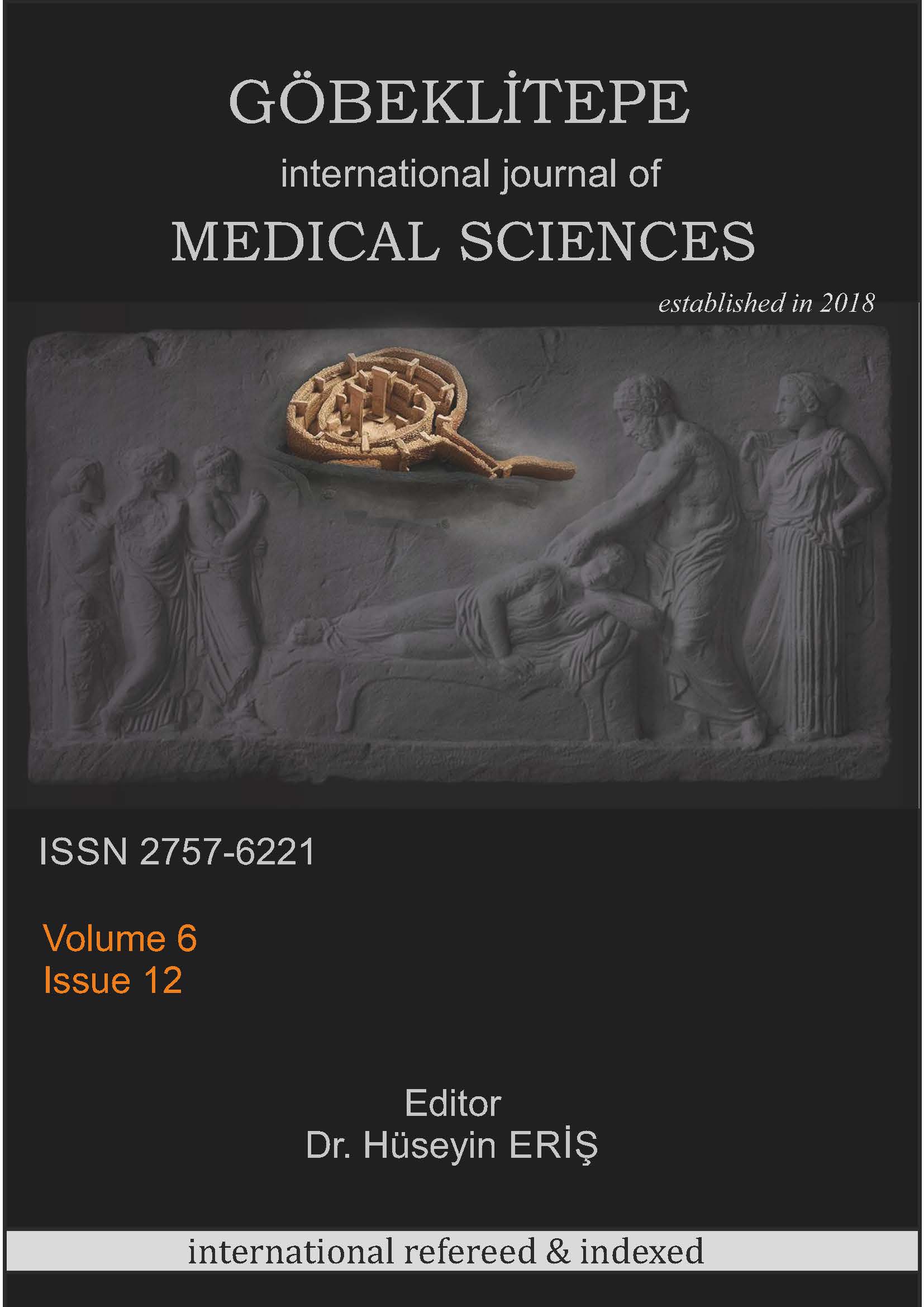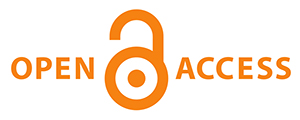GÜVENLİK RAPORLAMA BİLDİRİM SİSTEMİ İLE İSTENMEYEN OLAY BİLDİRİM SİSTEMİ KARŞILAŞTIRMASI
DOI:
https://doi.org/10.55433/gsbd/176.Anahtar Kelimeler:
İstenmeyen Olay Bildirimi, Sağlıkta Kalite, Güvenik RaporlamaÖzet
Ülkemizde Sağlık Bakanlığınca ulusal düzeyde hasta ve çalışan güvenliğini tehdit eden olay bildirimlerinin raporlanmasına yönelik Güvenlik Raporlama Sistemi (GRS) faaliyetleri başlatılmış ve 14.03.2020 tarihinde yayınlanan Sağlıkta Kalite Standartları (SKS) Hastane Seti (Sürüm 6)‘da Güvenlik Raporlama bildirim sisteminin adı ‘‘İstenmeyen Olay Bildirim Sistemi’’olarak değiştirilmiştir. Bu araştırmanın amacı SKS Hastane Seti (Sürüm 6)’da bölüme ait yapılan isim değişikliğinin çalışanlar tarafından algısını ve istenmeyen olay bildirim sürecine etkisini incelemek ve karşılaştırma yapmaktır. Araştırma kesitsel ve tanımlayıcı tipte tasarlanmıştır. Araştırmada araştırmacılar tarafından literatür taranarak belirlenen sorulardan oluşan anket yöntemi kullanılmıştır. Ankette kullanılan maddelerin güvenirliliği için cronbach alfa kullanılmıştır. Güvenirlilik sonucu cronbach alfa 0.855 olarak bulunulmuş ve güvenilir kabul edilmiştir. Çalışma, bir kamu hastanesinde görev yapan 231 sağlık personeli ile gerçekleştirilmiştir. Araştırmaya katılanların %71,4’ünün kadın, %74’ünün 27-31 yaş arasında, %43,7’sinin lisans mezunu, %46,8’inin haftada 40 saat çalıştığı, %49,4’ünün ebe-hemşire, %47,2’sinin kurumda çalışma süresinin 1-5 yıl arasında, %39,4’ünün meslekte çalışma süresinin 1-5 yıl arasında, %25,5’inin cerrahi ve %25,5’inin dahiliye servislerinde çalışmakta olduğu görülmüştür. İsim değişikliği algısının çalışılanların meslek grupları ve çalışılan birim açısından anlamlı farklılık bulunmuştur. Çalışma sonuçlarının, olay bildirim sistemi konusunda yapılan isim değişikliğinin sağlık kuruluşlarında çalışanlar tarafından algısının ve farkındalığının ölçülmesine katkı sağlayacağı düşünülmektedir.
Referanslar
Ahmed M, Arora S, Tiew S, Hayden J, Sevdalis N, Vincent C, Baker P. Building A Safer Foundation: The Lessons Learnt Patient Safety Training Programme. BMJ Qual Saf.2014; 23(1): 78-86.
Altunışık R, Coşkun R, Bayraktaroğlu S, Yıldırım E. Sosyal Bilimlerde Araştırma Yöntemleri, Sakarya: Sakarya Yayıncılık. 2010.
Banja JD. Persisting Problems İn Disclosing. Medical Error. Harvard Health Policy Review.2004;1
Bayyiğit S, Ecemiş K, Aydoğan AN. Sağlık Çalışanlarının Güvenlik Raporlama Sistemi Hakkında Bilgi Düzeylerinin Değerlendirilmesi. Sağlıkta Performans ve Kalite Dergisi.2019; 16(1): 63-82.
Blegen AM, Vaughn T, Pepper G, Vojır C, Stratton K, Boyd M. Patient And Staff Safety: Voluntary Reporting. American Journal Of Medical Quality. 2004;19: 67-73.
Carandang RR, Cao K, Jose N, Almonte F, Tinio R. Knowledge Andattitudes on Adverse Drug Reaction Reporting of Selected Hospital-Based Health Practitioners in Manila, Philippines. SAS Journal.2015a; 4:301-307.
Carandang RR, Resuello D, Hocson GB, Respicio KM, Reynoso C. Research Article Knowledge, Attitude and Practices on Medication Error Reporting among Health Practitioners From Hospitals in Manila. Scholars Academic Journal of Pharmacy (SAJP).2015b; 4(5): 293-300.
Chen LC, Wang LH, Redley B, Hsieh YH, Chu TL, Han CY. A Study on Tthe Reporting İntention of Medical İncidents: A Nursing Perspective. Clinnurs Res.2018; 27(5); 560-578.
Coyle YM, Mercer SQ, Murphy-Cullen CL, Schneider GW, Hynan LS. Effectiveness of A Graduate Medical Education Program For İmproving Medical Event Reporting Attitude and Behavior. Qual Saf Healthcare. 2005; 14(5): 383- 388.
Çakmak C, Konca M, Teleş M. Türkiye Ulusal Güvenlik Raporlama Sistemi (GRS) Üzerinden Tıbbi Hataların Değerlendirilmesi. Hacettepe Sağlık İdaresi Dergisi.2018;21(3):423-448.
Donaldson SLJ. WHO Draftguidelinesfor Adverse Eventreportingand Learning Systems - From Information to Action. Geneva: WHO Document Production Services.2005.
Evans SM, Berry JG, Smith BJ, Esterman A, Selim P, O'Shaughnessy J, Dewit M. Attitudes and Barriers to İncident Reporting: A Collaborative Hospital Study. Qual Saf Healthcare. 2006; 15(1): 39-43
Gıles S, Fletcher M, Baker M, Thomson R. Incident Reportingand Analysis. In: Walshe, K. Boaden, R. Patientsafety: Researchintopractice. Berkshire: Open University press. England. 2006.
Güven M. Hasta Güvenliği Ve Tıbbi Hatalar Antalya Atatürk Devlet Hastanesinde Çalışan Hemşirelerin Hasta Güvenliği İhlali ve Tıbbi Hata Tanıklıkları. (Yüksek Lisans Tezi), Beykent Üniversitesi, İstanbul.2014.
Hewitt T, Chreim S, Foster A. Incident Reporting Systems: A Comparativestudy of Two Hospital Divisions. Archives of Public Health.2016;74:34. DOI 10.1186/S13690-016-0146-8
IHI. Implementation Resource Guide A National Action Plan To advance patient Safety. Retrieved from ınstitute for Healthcare Improvement: Http://Www.İhi.Org/Engage/Initiatives/National-Steering-Committee-Patient Safety/Pages/National-Action-Plan-To-Advance-Patient-Safety.Aspx. 2020.
İşlek E. Bir Özel Dal Eğitim ve Araştırma Hastanesinde Hasta Güvenliğini Tehdit Eden Olayların ve Olası Nedenlerin Tanımlanması, Yüksek Lisans Tezi, Ankara Üniversitesi, 2009.
İncesue, Orhan F. An Analysis of Security Reporting System Data in A Public hospital: A Retrospective Research. Healthcare Academician Journal.2018; 5(2): 79.
Karaca A. Arslan H. Hemşirelik Hizmetlerinde Hasta Güvenliği Kültürünün Değerlendirilmesine Yönelik Bir Çalışma. Sağlık ve Hemşirelik Yönetimi Dergisi.2014;1(1):9-18.
Khammarnia M, Ravangard R, Barfar E, Setoodehzadeh F. Medical Errors and Barriers to Reporting in Ten Hospitals in Southern Iran. Malays J Med Sci.2015; 22(4): 57-63.
Keleş B. Sağlık Çalışanlarının Olay Bildirimlerine Yönelik Tutumlarının Değerlendirilmesi. Doktora Tezi, Hacettepe Üniversitesi, 2021.
Keleş B, Aloğlu, E. Türkiye’de Tıbbi Hata Raporlama Sistemlerinin Erişilebilirliği: Ankara Kamu Hastaneleri Örneği. Sağlık Akademisyenleri Dergisi.2019; 6(4):262-269.
Kohn LT, Corrigan JM, Donaldson MS. Toerr İs Human: Building A Safer Health System. Washington D.C: National Academy Press. 2000. Advers Olaylar Bulunmuştur.
Korkmaz AÇ. Hasta Güvenliğinde Sistem Hataları ve Hemşirelik Yaklaşımı. Yıldırım Beyazıt Üniversitesi Sağlık Bilimleri Fakültesi Hemşirelik E-Dergisi.2015;3(2): 48-55.
Larizgoitia I, Bouesseau MC, Kelley E. WHO Efforts to Promote Reporting of Adverse Eventsand Global Learning. J Public healthres. 2013;2(E29):168-174.
Lawton R, Parker D. Barriers to İncident Reporting İn A Health Care System. Qual Saf Health Care.2002; 11(1): 15-18.
Lin, YH, Ma SM. Willingness Of Nurses to Report Medication Administration Errors İn Southerntaiwan: A Cross-Sectionalsurvey. Worldviewsevidbased Nurs.2009; 6(4): 237-245.
Öztürk Z, Çelik G. Sağlıkta Kalite Yönetimi Bağlamında Çalışanların Hasta ve Çalışan Güvenliği Kültürü Algısı: Özel Hastane ve Kamu Hastanesi Karşılaştırması. İşletme Bilimi Dergisi (Jobs).2021; 9(1):51-86.
Poorolajal J, Rezaie S, Aghighi N. Barriers to Medical Error Reporting. Int J Prevmed. 2016; 6 :97.
Rodziewicz TL, Houseman B, Hipskind JE. Medical Error Reduction and Prevention. In: Statpearls [Internet]. Treasure Island (FL): Statpearls Publishing 2022.
Sağlık Bakanlığı, T. C. Sağlıkta Kalite Standartları Hastane Seti Versiyon 6.1. 2020.
Soydemir, D, Seren Intepeler S, Mert H. Barriers to Medical Error Reporting for Physicians and Nurses. West J Nurs Res.2017; 39(10):1348-1363
Taylor JA, Brownstein D, Christakis DA, Blackburn S, Strandjord TP, Klein EJ, Shafii J. Use Of İncident Reports by Physicians and Nurses to Document Medical Errors in Pediatric Patients. Pediatrics. 2004; 114(3): 729-735.
Tricarico P, Castriotta L, Battistella, C, Bellomo F, Cattani G, Grillone L, Degan S, De Cortid, Brusaferro S. Professional Attitudes to Ward İncident Reporting: Can We Measure and Compare İmprovements in Patient Safety Culture? Int J Qual Health Care. 2017; 29(2): 243-249.
Tuncay A. Hasta Güvenliği Kültürünün ve Hemşirelik Mesleği ile İlgili Faktörlerin Hemşirelerde Tıbbi Hataya Eğilime Etkisi. Yüksel Lisans Tezi, Sanko Üniversitesi, 2021
Ünal A. Pediatrik Birimlerde Hata Raporlamayı Artırma Stratejilerinin Oluşturulması ve Etkinliğinin Değerlendirilmesi. (Doktora Tezi), Dokuz Eylül Üniversitesi, İzmir.2016.
Vinther LD, Jensen CM, Meulengrachthjelmager D, Lyhne N, Nøhr C. Technology-İnduced Errors and Adverse Event Reporting in An Organizational Learning Perspective. In Building Capacity for Health in Formatics in the Future. 2017;358-363.
Willmott, JD. Health Professionals’ Perception of Patient Safety and Quality in A Western Australian Hospital. (Master Degree), Curtin University, Avustralya.2018.
Wilson B, Bekker HL, Fylan F. Reporting of Clinical Adverse Eventsscale: A Measure of Doctor and Nurse Attitudes to Adverse Eventreporting. Qual Saf Health Care. 2008; 17(5); 364-367.
Yıldız İ. Hekim ve Hemşirelerin Güvenlik Raporlama Sistemine Katılımının Değerlendirilmesi Eğitim ve Araştırma Hastanesi Örneği. (Yüksek Lisans Tezi), Dokuz Eylül Üniversitesi, İzmir.2015.
Arslanoğlu, A. Kalite yönetimi. (Ed. N. Gemlik). Hastane yönetiminde 4 boyut.Ankara: Nobel Akademik Yayıncılık, 2018.
İndir
Yayınlanmış
Sürüm
- 2024-07-02 (2)
- 2023-07-02 (1)
Nasıl Atıf Yapılır
Sayı
Bölüm
Lisans
Telif Hakkı (c) 2023 Göbeklitepe Sağlık Bilimleri Dergisi

Bu çalışma Creative Commons Attribution 4.0 International License ile lisanslanmıştır.




